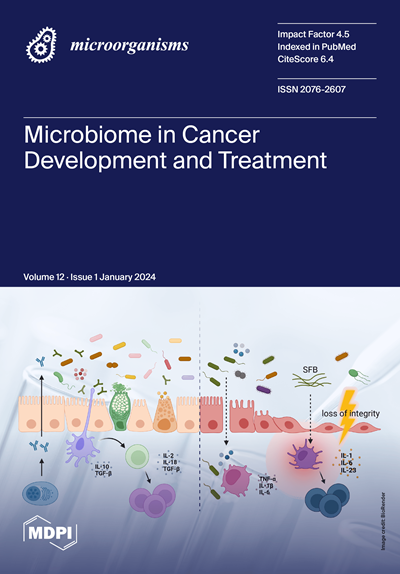枯草芽孢杆菌和巨大芽孢杆菌在压力诱导下产生硫化物
IF 4.1
2区 生物学
Q2 MICROBIOLOGY
引用次数: 0
摘要
以前曾发现,在含有硫酸盐的极少量培养基上生长的革兰氏阴性大肠杆菌,应激诱导的生长停滞伴随着硫化氢的释放。硫化氢的来源是细胞内半胱氨酸的脱硫作用,这也是将半胱氨酸维持在安全水平的方法之一。半胱氨酸过量的危险与半胱氨酸参与芬顿反应有关,芬顿反应会形成剧毒的羟自由基。利用电化学传感器,我们确定了在含硫酸盐的最小培养基上生长的革兰氏阳性细菌枯草芽孢杆菌和巨大芽孢杆菌应激诱导的硫化物产生,以及 Eh、pH 值、氧和钾消耗等生理参数的变化。在葡萄糖、铵或抗生素作用导致生长停止时,可观察到硫化物的产生。使用传感器可以连续记录生长培养物中参数的微小变化。芽孢杆菌和大肠杆菌产生硫化物的数量和动力学存在明显差异。这些差异被认为是由于芽孢杆菌缺乏谷胱甘肽。有人认为,在所述条件下,芽孢杆菌在压力诱导下产生的硫化物可能是自然界中以前未知的硫化氢来源之一。本文章由计算机程序翻译,如有差异,请以英文原文为准。
Stress-Induced Sulfide Production by Bacillus subtilis and Bacillus megaterium
It was previously discovered that, in the Gram-negative bacterium Escherichia coli growing on a minimal medium with sulfate, stress-induced growth arrest is accompanied by the release of hydrogen sulfide. The source of the sulfide is the desulfurization of intracellular cysteine as one of the ways of maintaining it at a safe level. The danger of excess cysteine is associated with its participation in the Fenton reaction, leading to the formation of highly toxic hydroxyl radicals. Using electrochemical sensors, we identified stress-induced sulfide production in the Gram-positive bacteria Bacillus subtilis and Bacillus megaterium, growing on a minimal medium with sulfate, and changes in physiological parameters such as Eh, pH, and oxygen and potassium consumption. Sulfide production was observed during growth arrest due to the depletion of glucose, ammonium or antibiotic action. The use of sensors allowed to continuously record, in growing cultures, even small changes in parameters. There were significant differences in the amount and kinetics of sulfide production between Bacillus and E. coli. These differences are thought to be due to the lack of glutathione in Bacillus. It is suggested that stress-induced sulfide production by Bacillus under the described conditions may be one of the previously unknown sources of hydrogen sulfide in nature.
求助全文
通过发布文献求助,成功后即可免费获取论文全文。
去求助
来源期刊

Microorganisms
Medicine-Microbiology (medical)
CiteScore
7.40
自引率
6.70%
发文量
2168
审稿时长
20.03 days
期刊介绍:
Microorganisms (ISSN 2076-2607) is an international, peer-reviewed open access journal which provides an advanced forum for studies related to prokaryotic and eukaryotic microorganisms, viruses and prions. It publishes reviews, research papers and communications. Our aim is to encourage scientists to publish their experimental and theoretical results in as much detail as possible. There is no restriction on the length of the papers. The full experimental details must be provided so that the results can be reproduced. Electronic files and software regarding the full details of the calculation or experimental procedure, if unable to be published in a normal way, can be deposited as supplementary electronic material.
 求助内容:
求助内容: 应助结果提醒方式:
应助结果提醒方式:


